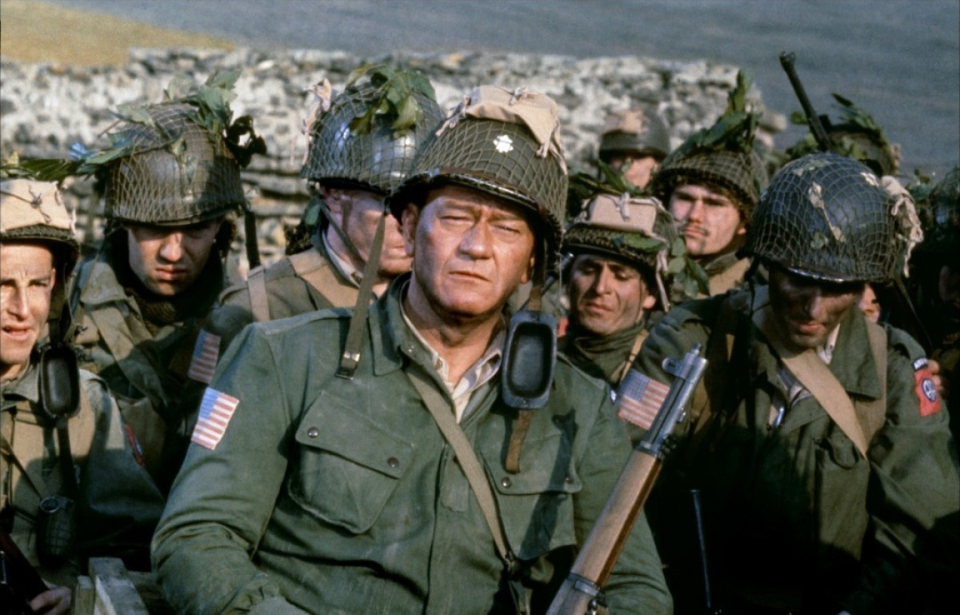A number of movies centered around the D-Day landings have been released over the decades, but few have presented the story as accurately as The Longest Day. Released in 1962, the black-and-white film features a star-studded cast, with many actors having actually served during the Second World War.
Over 60 years on, the movie continues to have a loyal fanbase, and it’s not hard to understand why.
From book to script
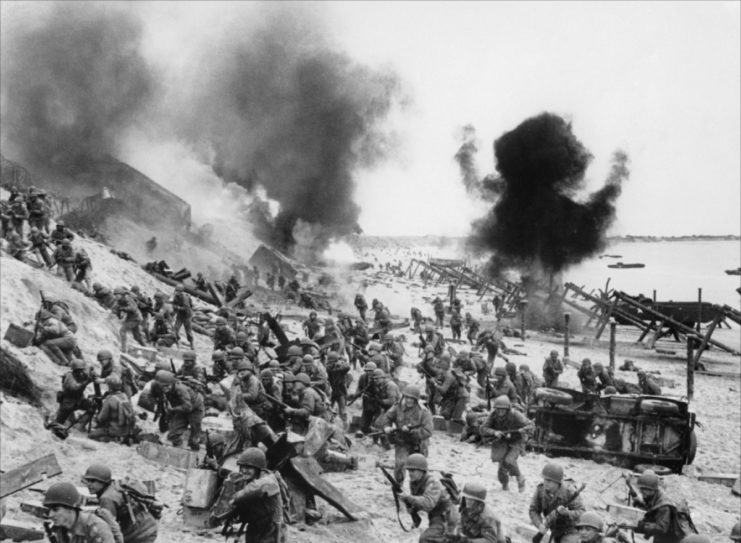
The Longest Day wasn’t always an award-winning film. Before the story hit the big screen, it was a book by Cornelius Ryan. Released in 1959, it covers the first day of the Battle of Normandy, better known as the D-Day landings of June 6, 1944.
To write the book, Ryan leaned on interviews with real-life participants of the invasion, both soldiers and civilians. It fast became popular, and since its release has sold tens of millions of copies. On top of that, the book has been translated into 18 languages.
Just a year after The Longest Day was released, French producer Raoul Lévy purchased the rights from publisher Simon & Schuster. The plan was to turn the book into a feature-length film, with the help of director Michael Anderson and the Associated British Picture Corporation. In return, Ryan would receive $100,000, plus an additional $35,000 to write the screenplay.
Filming was meant to begin in 1961, but money issues left Lévy unable to begin production. By this time, American producer Darryl F. Zanuck had shown interest in the book and wound up purchasing the rights from Lévy for $175,000.
Ryan was still tasked with writing the screenplay, but didn’t get along with Zanuck, meaning another individual had to act as mediator between the pair. The producer also brought in other writers, including All Quiet on the Western Front author, Erich Maria Remarque.
Making The Longest Day as authentic as possible
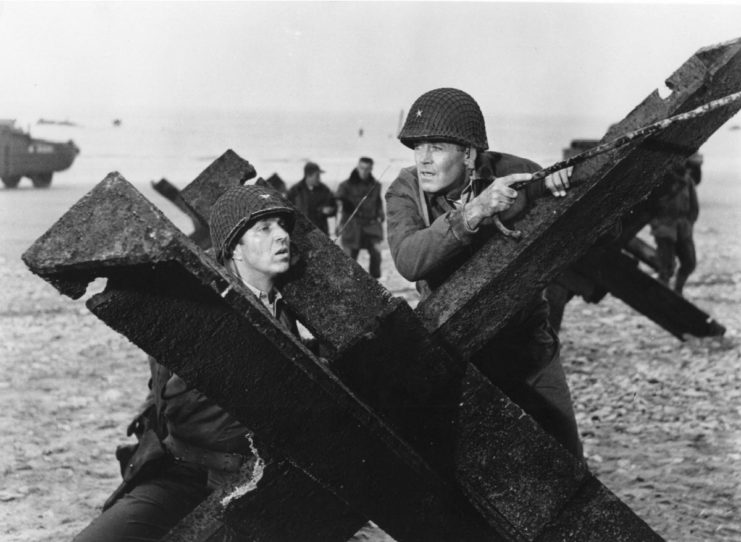
With the rights to the story secured and a screenplay in his hands, Zanuck set to work on making the film a reality. During pre-production, producer Frank McCarthy, a former official with the US Department of War, arranged for military collaboration among the countries whose armed forces would be featured. Additionally, Zanuck used his own connections to secure 700 US Army Europe and Africa (USAREUR-AF) troops as extras.
Military consultants from both sides of World War II were also hired. As the aim of The Longest Day was to show the events of D-Day from eyes of both the Allies and Germans, it was crucial to have insights from those who were involved in the actual invasion.
For the Allies, this included 82nd Airborne Division Commanding General James “Jumpin’ Jim” Gavin; Marie-Pierre Kœnig, who commanded the Free French on D-Day; Philipe Kieffer, a Free French hero; Simon Fraser, 15th Lord Lovat, who commanded the 1st Special Service Brigade; Frederick Morgan, the deputy chief of staff of the Supreme Headquarters Allied Expeditionary Force (SHAEF); and John Howard, a British Army officer who led the airborne assault on Pegasus Bridge.
For the Axis powers, Zanuck enlisted the help of famed German General der Infanterie Günther Blumentritt, who was not only instrumental in planning the invasions of Poland and France, but also helped develop the modern German Army. Oberst Josef “Pips” Priller, a fighter ace with 101 confirmed kills; Generalleutnant Max-Josef Pemsel, a career military man; and Major Werner Pluskat, who was present at D-Day, were also tapped to aid in the film’s production.
Interestingly, Erwin Rommel’s wife, Lucie, served as a consultant on the film.
The Longest Day features a star-studded cast
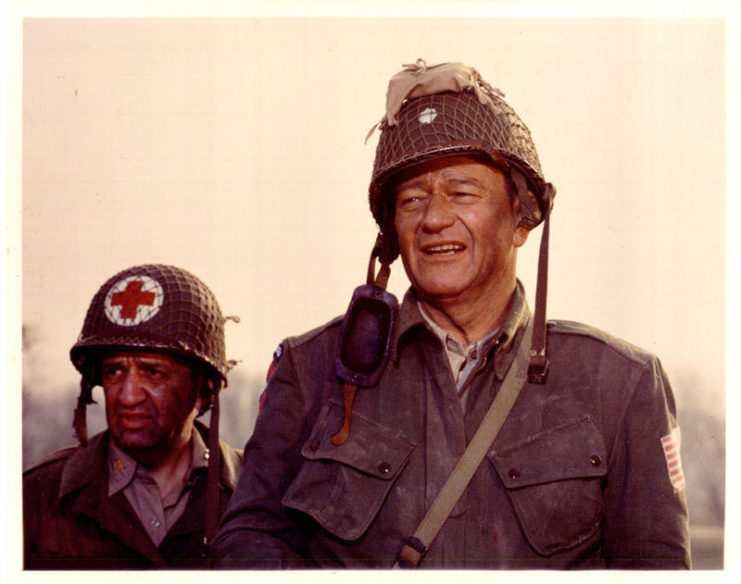
One of the reasons behind The Longest Day‘s popularity is its star-studded cast. Along with John Wayne and Henry Fonda, the film also features appearances from Paul Anka, Robert Ryan, Steve Forrest, Robert Mitchum and Robert Wagner, among many others.
Along with featuring American actors, the movie also starred a number of foreign stars from England, France and Germany, including Sean Connery, Richard Burton, Jean-Louis Barrault, Bourvil, Hans Christian Blech and Irina Demick. This helped it appeal to audiences outside of the United States.
A number of those who starred in the film were also veterans of WWII – some were even present at the D-Day landings. British actor Richard Todd was among the first to land at Normandy and participated in the assault on Pegasus Bridge. As well, Fonda, Eddie Albert, Leon Genn, Rod Steiger, Kenneth More, Tom Tyron and many others served in the conflict.
Stuart Whitman and Gary Collins were also members of the US Army, but enlisted following the war.
Filming where the action actually happened
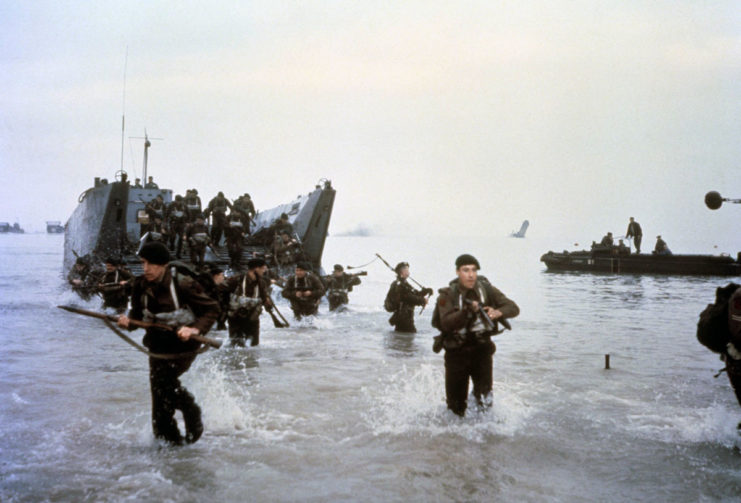
To ensure filming went smoothly, Zanuck hired multiple directors to work alongside him. Filming on-location, including at Pegasus Bridge and Pointe du Hoc, the budget of $10 million was the largest for a black-and-white movie until Schindler’s List in 1993.
Production had the support of the US Sixth Fleet, which supplied the landing craft, and paradummies were used to show the decoy parachute drops of Operation Titanic, yet another aspect of the all-encompassing Operation Overlord. Speaking of the landing craft, many of the extras were weary of jumping into the cold water, which made Robert Mitchum upset. He subsequently volunteered to make the first jump, after which others followed.
Likely the most exciting part of the filming process was the use of three fully-restored Supermarine Spitfires, equipped with new Rolls-Royce engines. Free French flying ace Pierre Laureys supplied the British aircraft for a scene depicting an attack on the Germans. What’s more, the famed pilot flew one of the fighters in the movie.
Issues with the extras
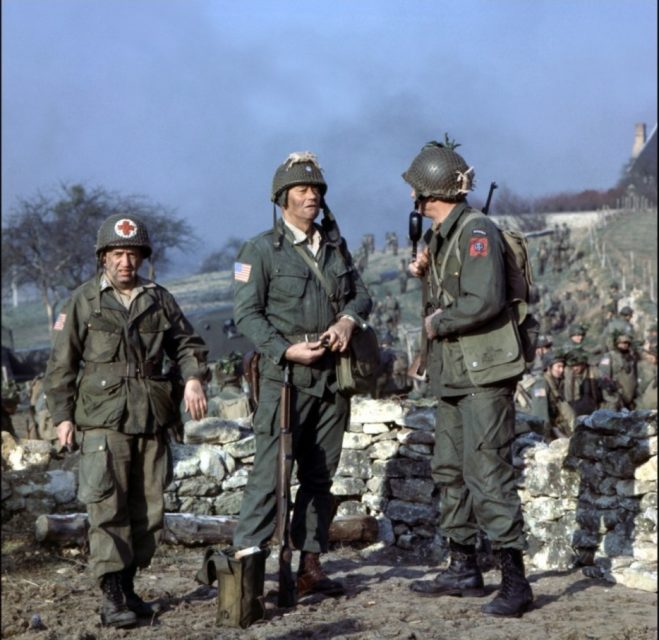
Zanuck’s aim for authenticity wasn’t without its controversy. There were instances during the filming process that led to questions from government and military officials.
A major issue was the use of the aforementioned 700 USAREUR-AF troops. Filming occurred during the 1961 Berlin Crisis, meaning a number of the soldiers tasked with being extras had to be recalled. This led to complaints from high-ranking political leaders, who questioned why the military would allow for soldiers to be diverted during the height of the Cold War.
On top of this, the film was investigated for possibly making soldiers work as extras against their will.
What does The Longest Day get right?
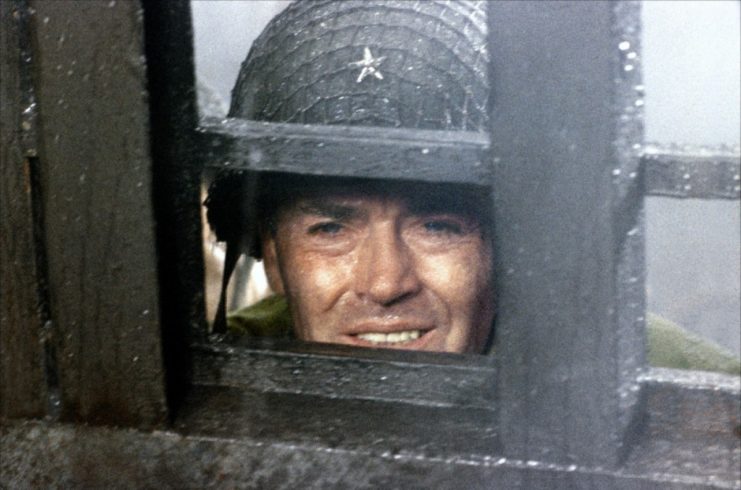
A basic plot summary for The Longest Day is as follows: opening in the days prior to the D-Day landings, we witness Supreme Allied Commander Gen. Dwight D. Eisenhower give the go ahead for the Allies to launch their strikes on Normandy.
As the film moves on, we see the little-discussed actions of those not involved in the beach landings, such as the paratroopers who landed in key areas both prior to and after the invasion, including British gliders at Pegasus Bridge and sabotage efforts by the French resistance.
Viewers are also shown the German side of the invasion, something that’s key to why the film is so renowned. It isn’t a one-sided depiction of D-Day, rather, an all-encompassing one. In relation to the Wehrmacht, this includes the uncertainty officials felt over whether the Normandy landings were the actual invasion or if they were a diversion to distract the German forces from the actual target, the Strait of Dover.
That’s the basics, so how authentic is The Longest Day? As hinted at in the introduction, it’s among the most accurate films when it comes to bringing the events of D-Day to the big screen. This is particularly seen in the German-centered scenes. The military is caught off-guard by the attack, evident in the fact that the Führer was sleeping while it happened. On top of this, Rommel had left the front to celebrate his wife’s birthday.
What’s most interesting is that the film covers the emotions that one of its consultants felt on the actual day. Werner Plusket was at Normandy as the Allied vessels neared the shores, and he began to panic at the sheer number. Up until that point, it had been the general belief of the Germans that the Allies didn’t have enough ships to launch a successful invasion.
In terms of the Allies, The Longest Day has been praised for how accurately it depicts the reservations some commanders had over the landings. It also shows how many British and American troops were mowed down by German machine gun fire upon landing on the beaches. However, it should be noted that this resistance is only properly shown on Omaha Beach, as opposed to all five.
Two final notes we’ll touch upon are the authenticity of the Allied paratroopers dropping into France in the early hours of June 6, 1944 – in the wrong places, only to be killed by German fire – and the involvement of everyday French citizens in aiding the Allies. The country’s civilian population is often overlooked when discussing D-Day, but The Longest Day pays homage to their efforts.
What did The Longest Day get wrong?
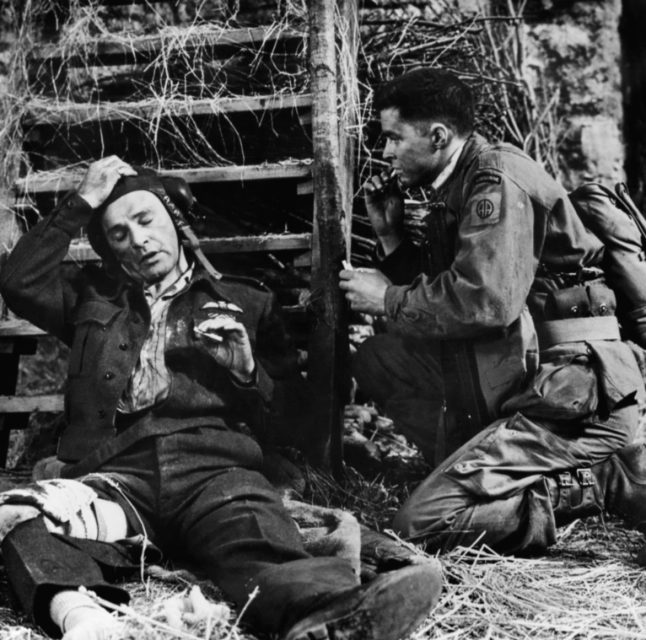
It’s almost impossible for a Hollywood film to get everything perfect, especially when it’s covering an event that happened nearly two decades prior. The most obvious is that many of the actors hired to portray paratroopers were too old to have actually been one. There are also the typical Hollywood tropes that hinder some areas of the film. This includes the over-dramatization of the actions in Saint-Mère-Église and the taking of a German-occupied casino by French forces.
One of the earliest mistakes wasn’t intentional. The filmmakers had wanted to use authentic landing craft for the scenes where the actors arrive on the beaches. However, they were unable to secure enough and, as such, were forced to use those in active service in 1962.
TIME magazine at the time also reported an issue brought up by Civil Rights leaders at the time, in which they called out the lack of African-American representation in the film. “Not one Negro was seen in the movie,” the report reads. “Normandy’s Negros, serving in mostly segregated units, worked under fire instead as stevedores and as antiaircraft men who ran up barrage balloons to frustrate enemy air strikes at the beaches. They, like their white comrades, shed blood.”
Fun tidbits about The Longest Day
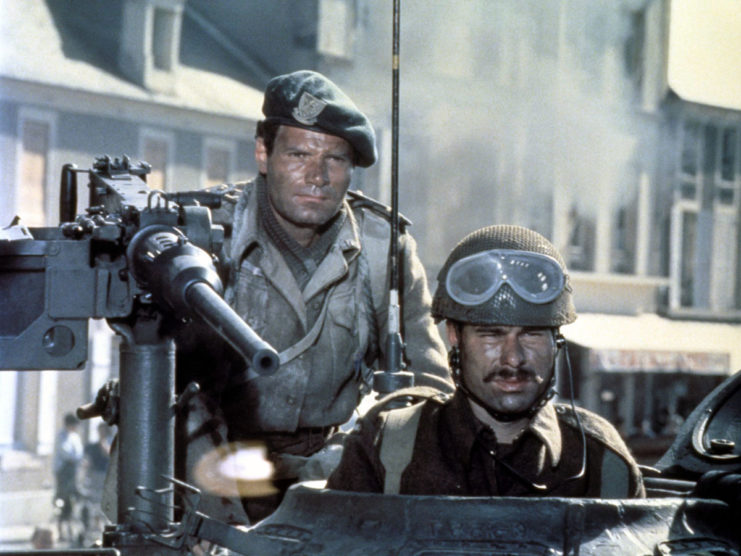
Now that we’ve got all that out of the way, we’re going to end the article with some fun trivia about The Longest Day.
One of the most well-known facts was that Dwight D. Eisenhower walked out after only a few minutes over the inaccuracies he saw. However, on the flip side, the former US president was willing to star in the film during the early days of its production. He was passed over when it was determined make-up artists wouldn’t be able to make him look young enough.
Similarly, Lt. Col. Benjamin Vandevoort was unhappy with the fact John Wayne had been cast to portray him. His main gripe was that the then-54-year-old Wayne was too old, as the US Army officerr was just 27 at the time of the D-Day landings.
While Hollywood was moving toward making all movies colorized by the time The Longest Day was released, Zanuck made the decision to film it in black-and-white, so archive footage could be incorporated, therefore adding to its authenticity.
More from us: The World War II Classic Movie That Still Thrills Fifty Years Later
Arguably the most interesting fact is that the filmmakers unearthed a WWII-era tank while clearing out an area near Pointe du Hoc. Dating back to the actual Normandy landings, it was cleaned off, repaired and used in the film.
